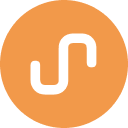Design Process
Every project is different. With this in mind, my process is adaptable and flexible. Acheiving the most valuable outcomes by knowing what tool to use and when to use it is the secret sauce of a great designer.
To enable this flexibility, having a strong understanding the fundamentals of user-centered design and what those tools are is important. Whether working as an individual contributor or leading others, I follow a user-centered design process that values research, iterative design, continual measurement, and improvement.
Research
I start with identifying the users, their use cases, the contexts they are in, and opportunities that exist. I would also do some internal research, making sure I understand the business requirements and goals.
Analyze
Research tends to be result in a lot of data, much of it raw. Analyzing and synthesizing the raw data into meaningful insights allows more efficient sharing of key information with a broader group. I am also looking for gaps in knowledge, which may result in additional research.
Design & Test
I believe in highly iterative design practices, starting with the most efficient way of creating a testable artifact. I want feedback early and often. This could be a sketched document shared internally, or perhaps a low-fidelity prototype we test with users. Ultimately, through a series of iterative designs and tests, we will gain confidence and validation on a solution which we will base high-fidelity designs on.
We may also find that we have additional research to do during our testing.
Launch & Measure
When rolling out alphas and betas, I closely monitor through a variety of channels the usage and performance of new designs. Time needs to be given to iterate based on the information gathered during this phase. I particularly enjoy surveys, quantative metrics, and qualitative tools like session recordings.


